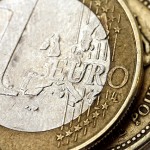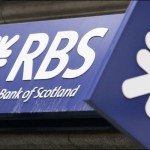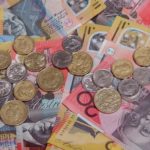The euro advanced to the strongest level in more than a week against the US dollar, after the European Central Bank decided to hold its main interest rate at a record low this month as stronger inflation and economic output eased pressure on central banks officials to take action.
EUR/USD touched a session high at 1.3815 at 13:46 GMT, after which consolidation followed at 1.3809, adding 0.55% for the day. Support was likely to be received at March 5th low, 1.3707, while resistance was to be encountered at February 28th high, 1.3824, also the pairs highest since December 27.
The Governing Council of the ECB decided to maintain the benchmark interest rate at a record-low 0.25% at its meeting today. The Council also decided to keep the deposit rate at zero and the marginal lending rate at 0.75%.
The ECB President Mario Draghi is scheduled to hold a press conference at 13:30 GMT in Frankfurt to explain the decision.
Draghi having told a month ago that he needed more information, before deciding whether to act to counter weak price pressure, has been handed better than-projected reports on the euro area economy.
Last week, Eurostat reported that the inflation rate had rebounded from a 4-year low of 0.7% in October, which prompted the ECB to cut the main interest rate unexpectedly in November. Inflation in the euro area grew at an annualized rate of 0.8% in February, the same as in the previous month and exceeding analysts’ projections for a 0.7% increase.
At the same time, core consumer prices, which exclude volatile items such as food, energy, tobacco and alcohol increased at an annualized rate of 1% in February, exceeding experts’ forecasts for a 0.8% advance and up from January’s 0.8% increase. Februarys reading was also the strongest since September.
“The euro zone is on track to slowly chip away at the slack in the economy, with confidence pointing to gradually rising growth rates and unemployment stabilizing,” said Christian Schulz, senior European economist at Berenberg Bank in London, cited by Bloomberg.
While the recovery remains fragile, with inflation still remaining less than half the ECB target of 2%, which the central bank uses to define price stability, economic data in the past four weeks seemed encouraging. Gross domestic product in the 18-nation common currency area rose 0.3%, more than analysts had projected, mainly driven by stronger expansions in Germany, France, Netherlands and a return to growth in Italy. In addition, economic sentiment jumped to more than a 2-1/2-year high last month, while services and manufacturing output surged the most since June 2011.
Meanwhile, greenback’s demand was supported after a report by the US Department of Labor revealed the number of initial jobless claims for the week ended March 1st fell to 323 000 from 349 000 a week ago. Analysts had expected that the number of people filing for unemployment benefits will decline less to 336 000.
Yesterday, Automatic Data Processing reported that companies operating in the US private sector added 139 000 new jobs in February, defying analysts’ projections of an increase to 158 000 and after January’s reading was revised sharply downward to 127 000 from earlier estimates of 175 000 added workers.
Also fanning negative sentiment, activity in the US sector of services grew at the weakest level since August 2010, with the corresponding PMI coming in at 51.6 in February, down from 54.0 in the previous month and confounding analysts’ expectations of a smaller decline to 53.5.
However, the Institute for Supply Management reported on Monday that manufacturing activity in the United States expanded at a faster than projected pace in February. The corresponding PMI advanced to a reading of 53.2 last month from 51.3 in January, while analysts had expected that the index will climb less, to 52.0 in February. Values above the key level of 50.0 are indicative of expansion in activity.
Elsewhere, having reached a session high at 1.6750 at 14:01, GBP/USD trimmed earlier gains to trade little changed at 1.6711 at 12:44 GMT, losing 0.06% for the day. Support was likely to be received at March 5th low, 1.6658, while resistance was to be encountered at March 3rd high, 1.6751.





